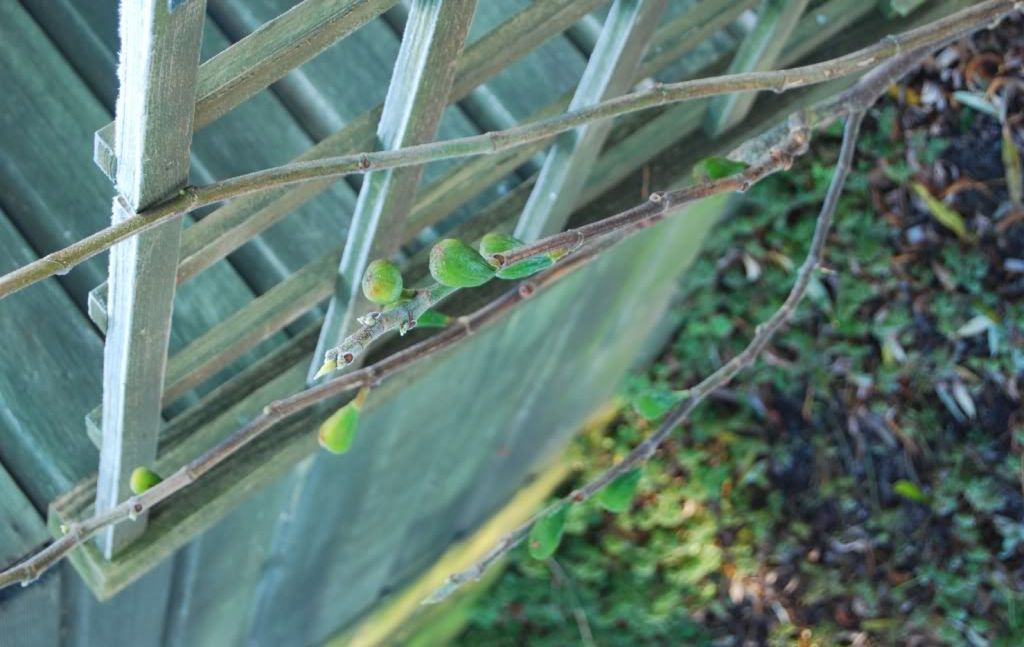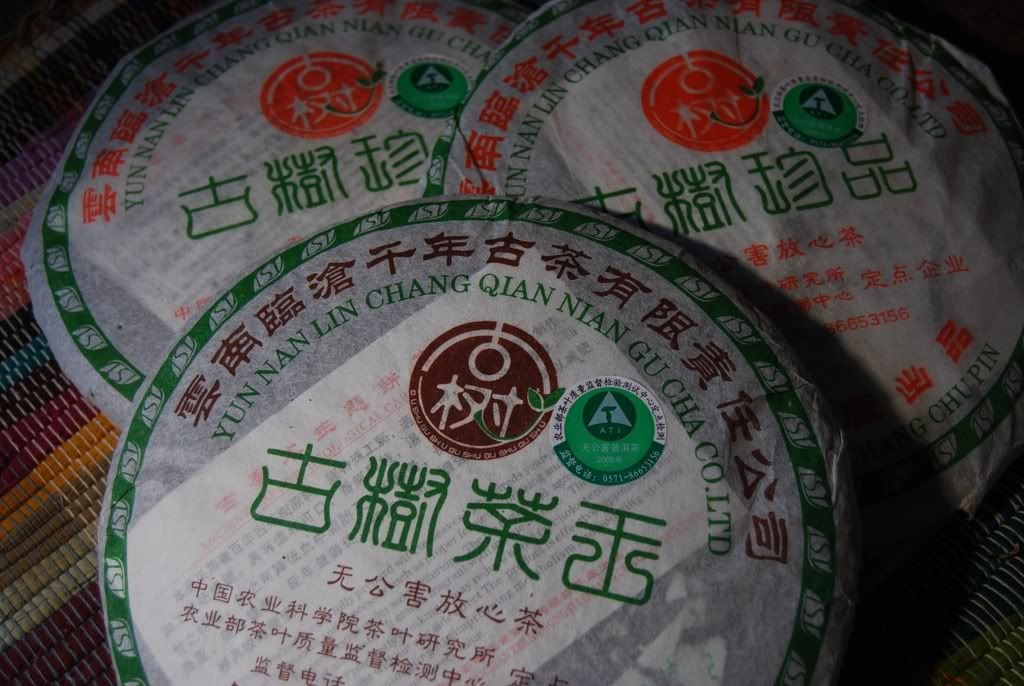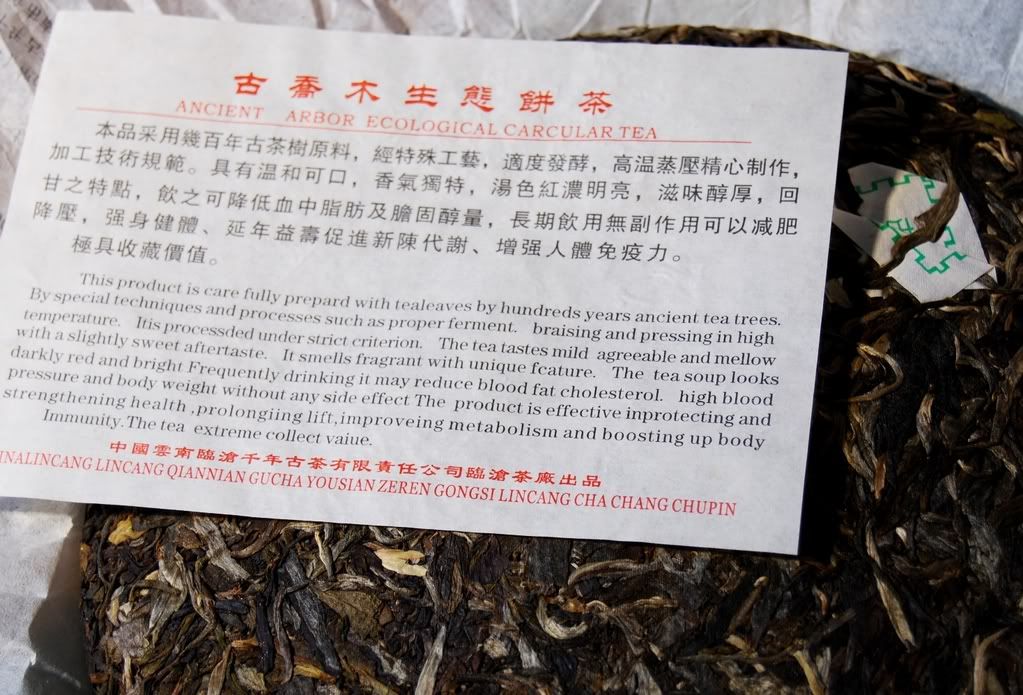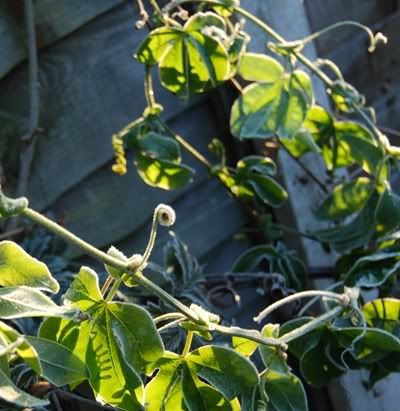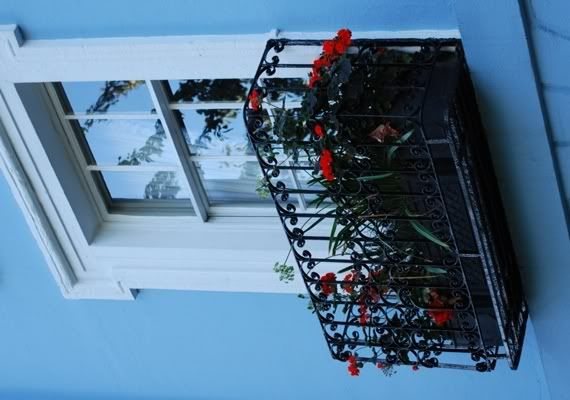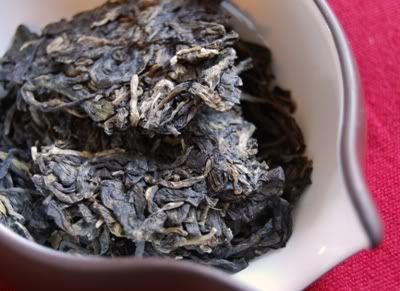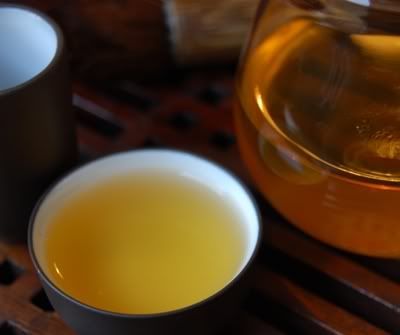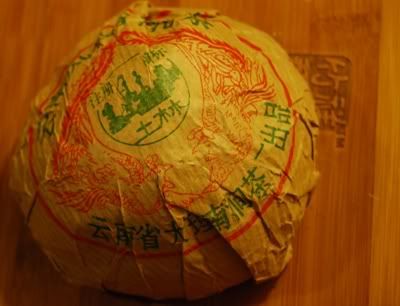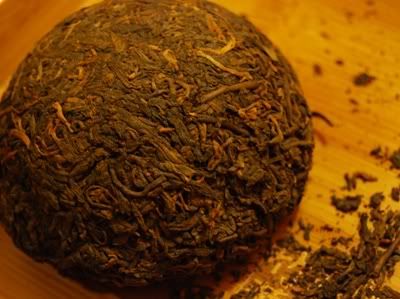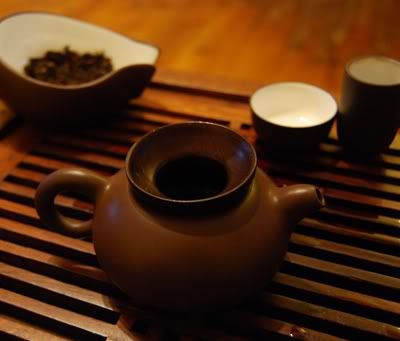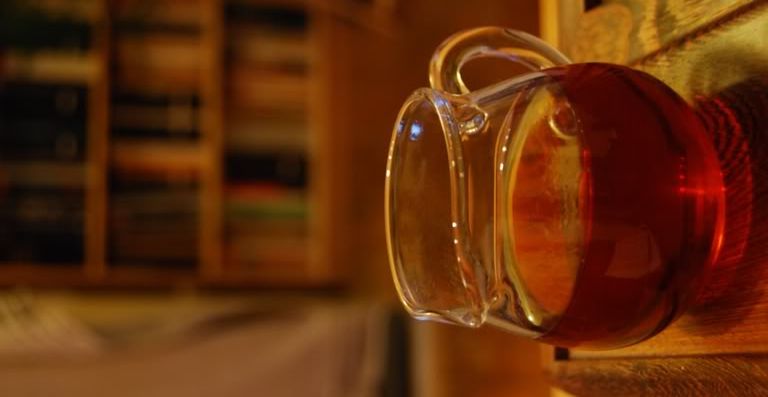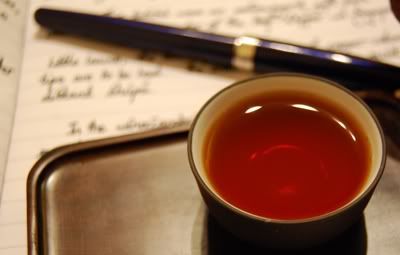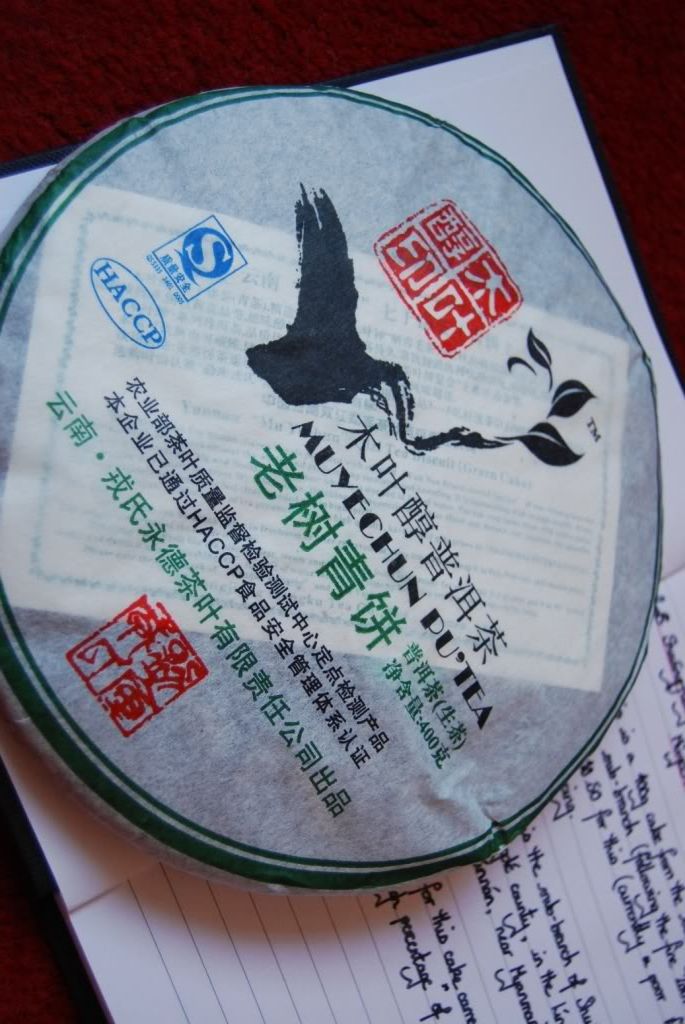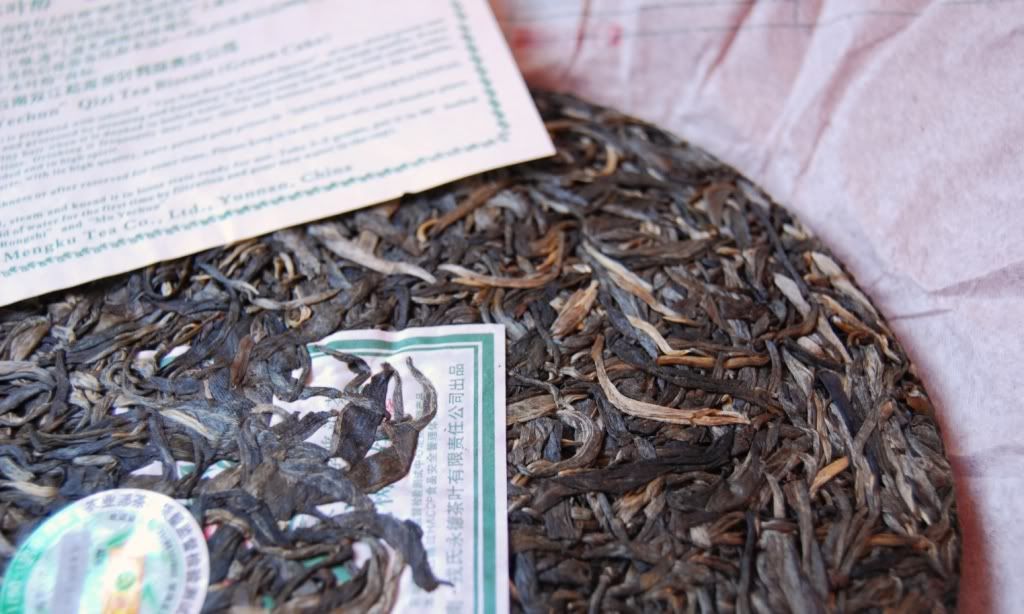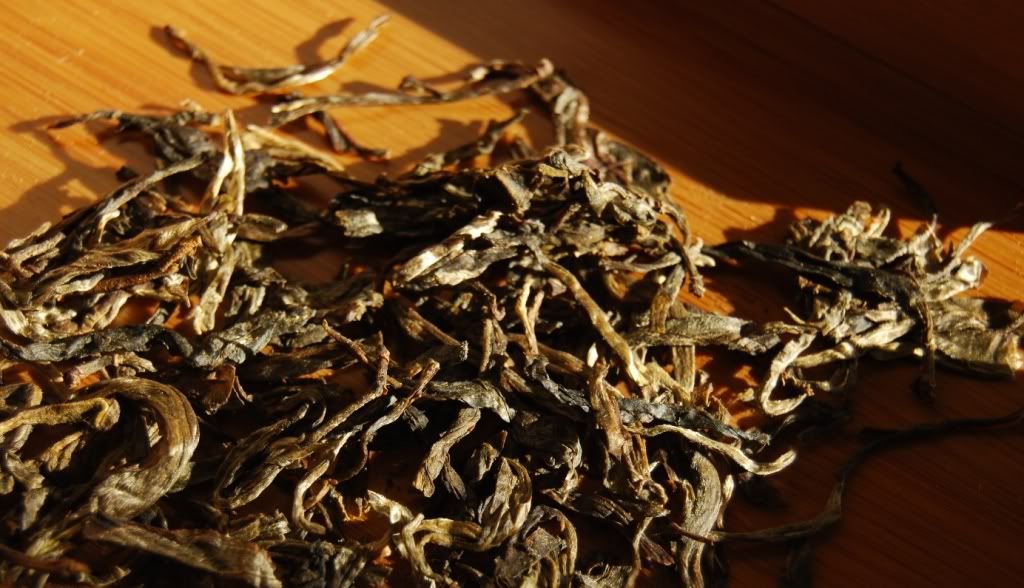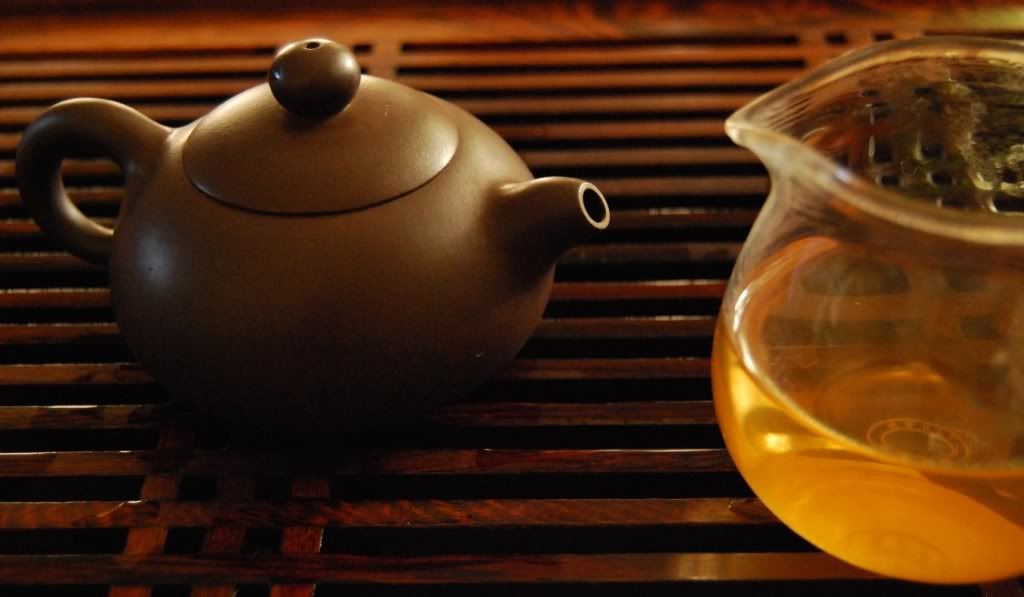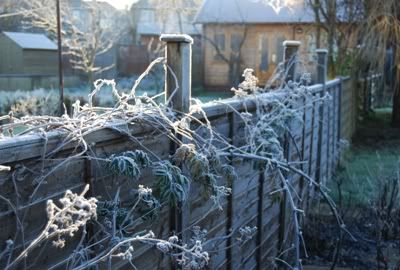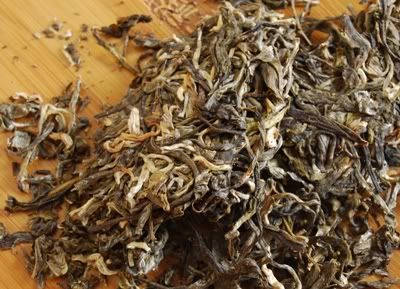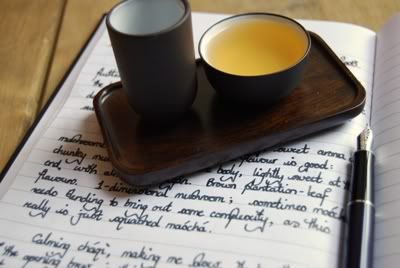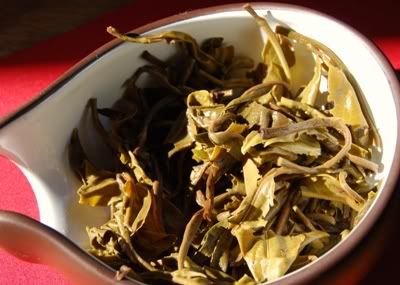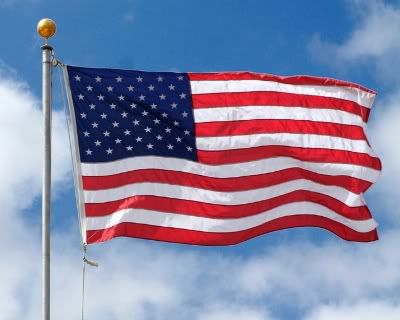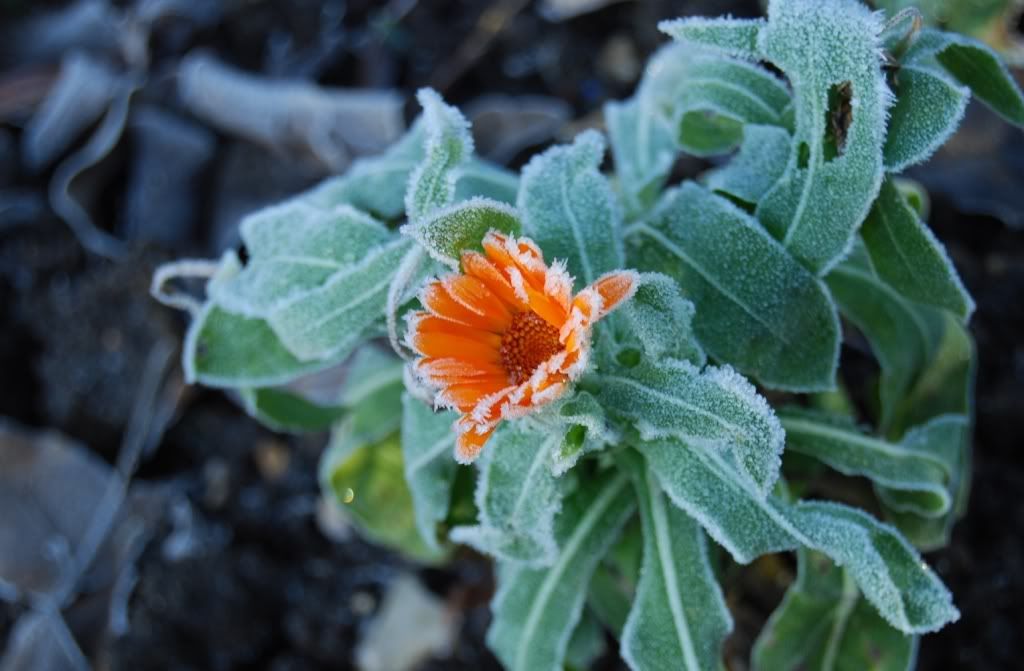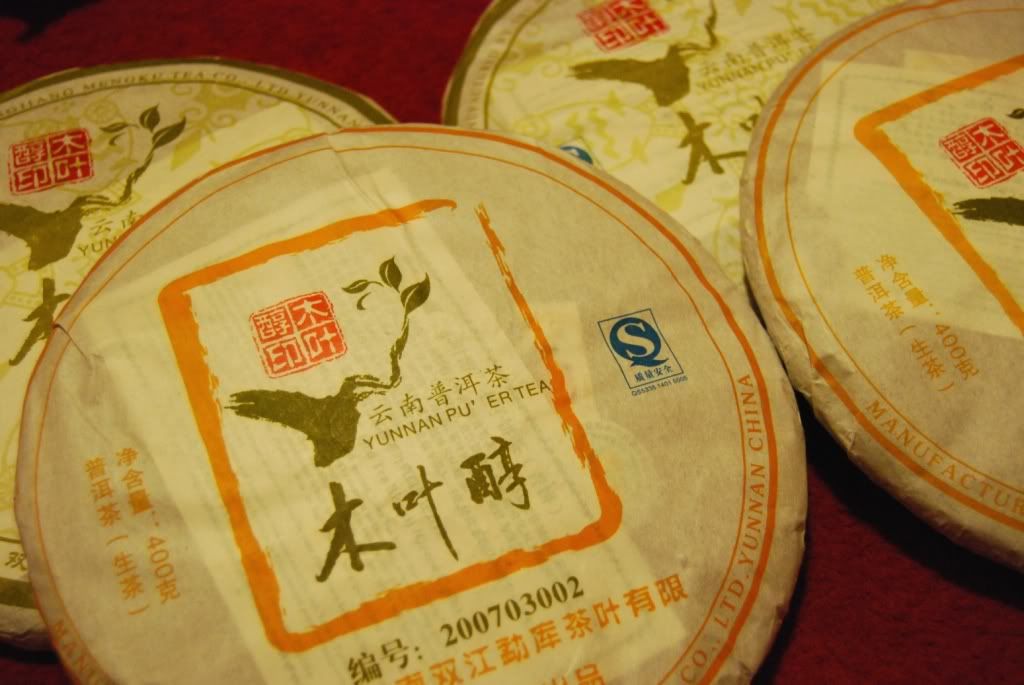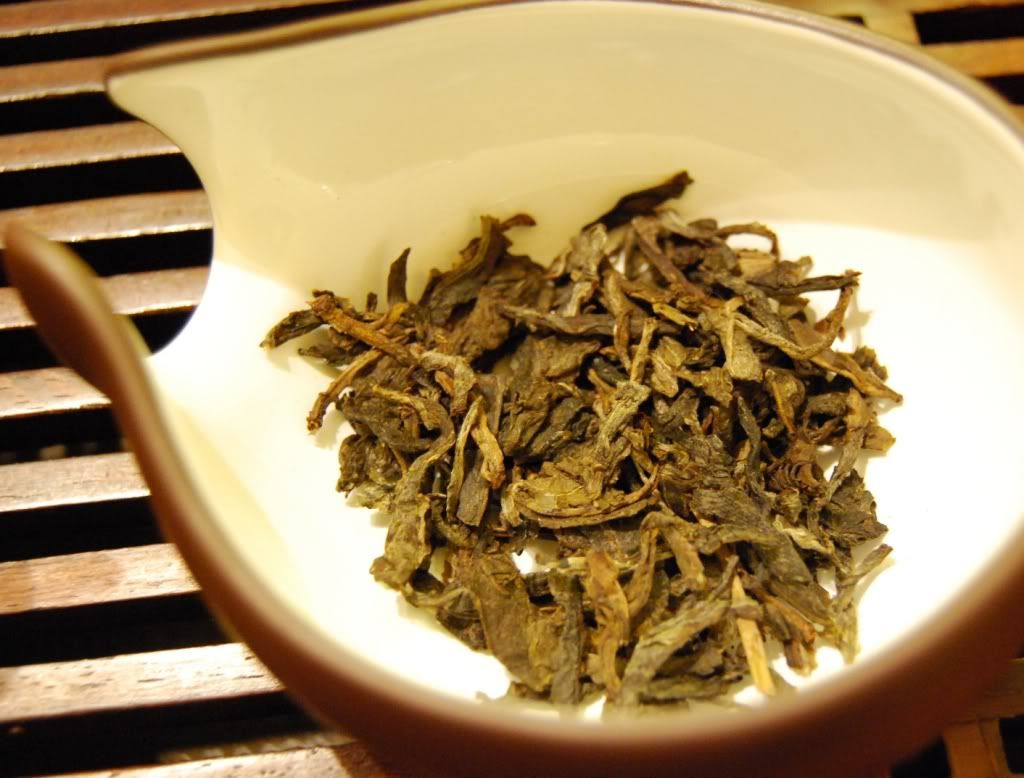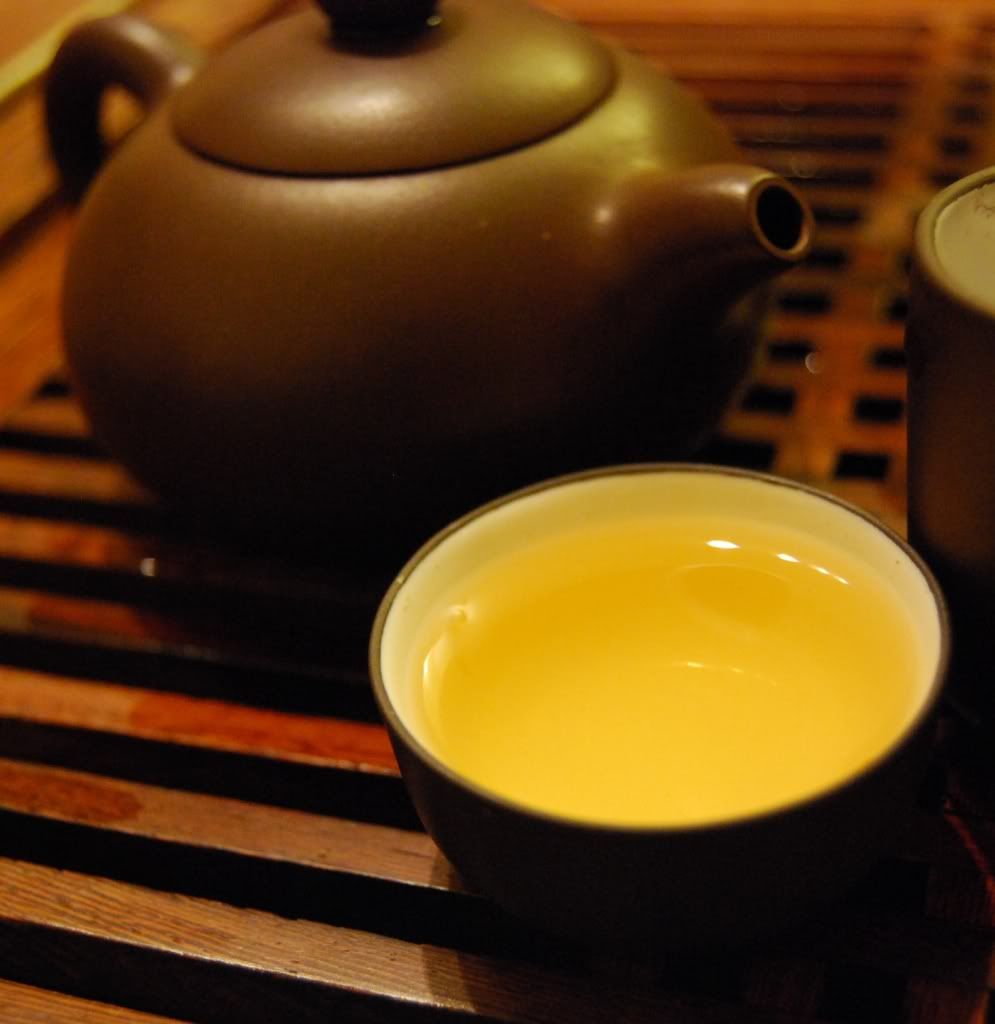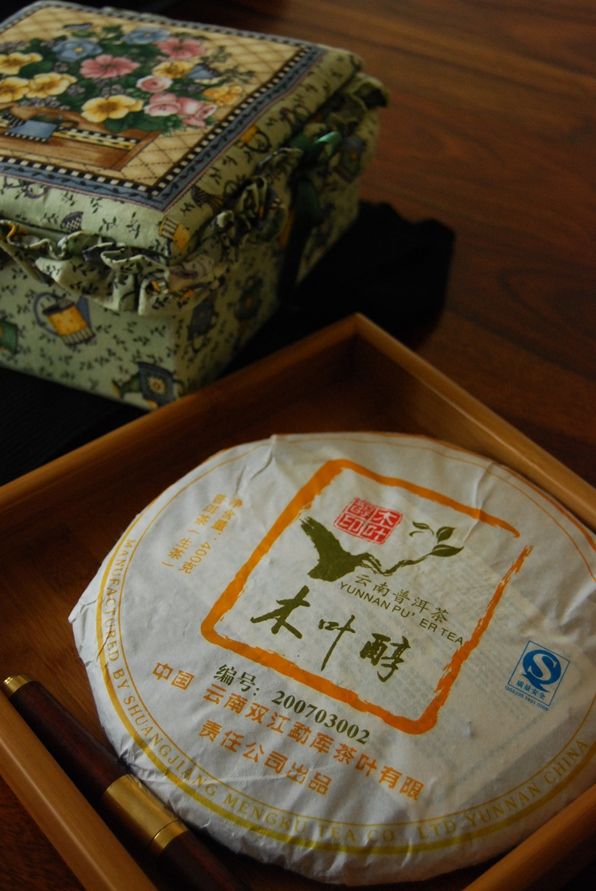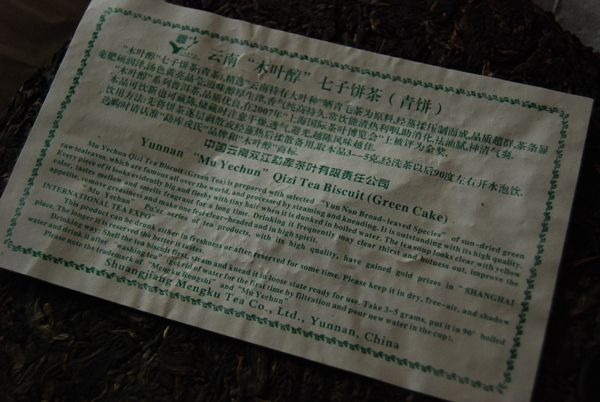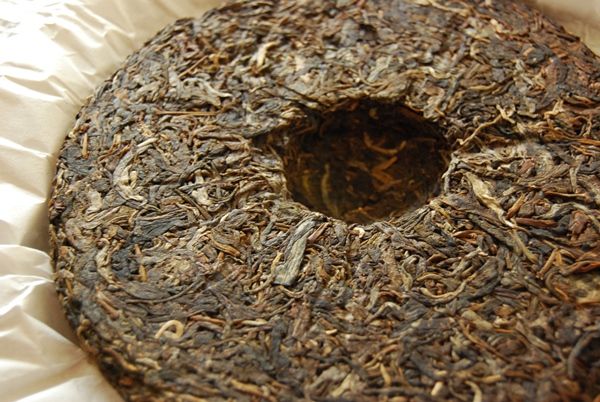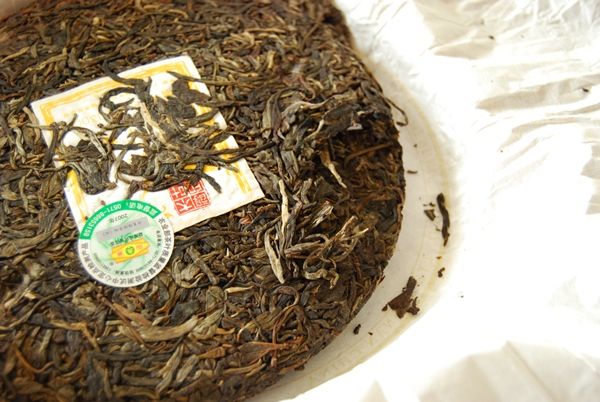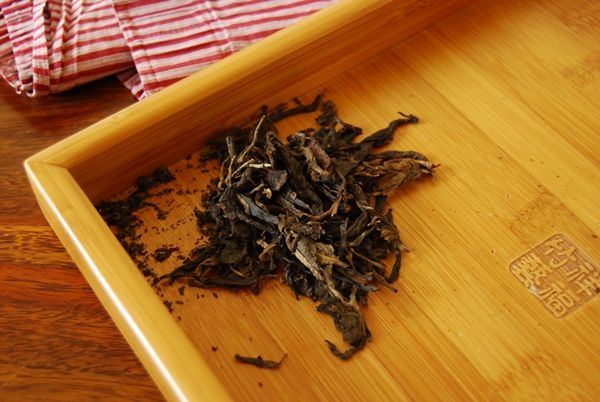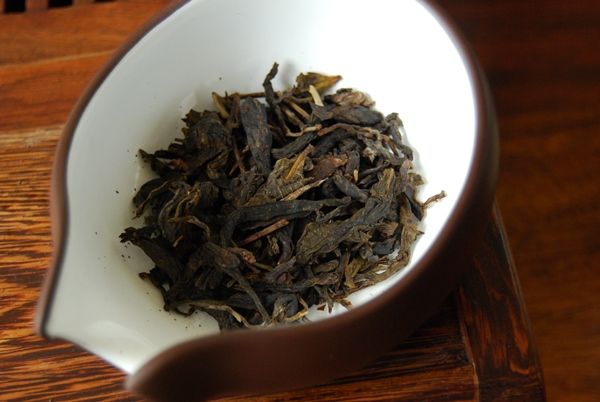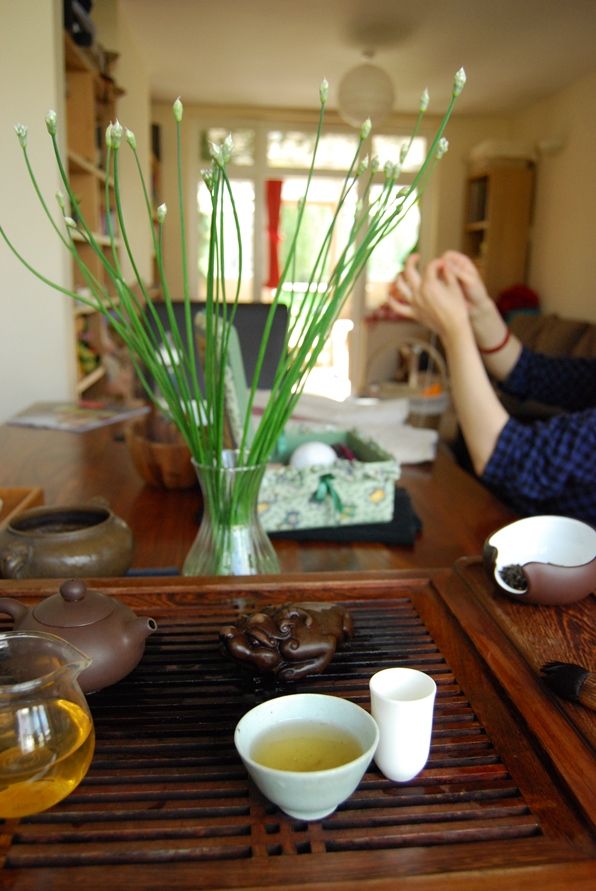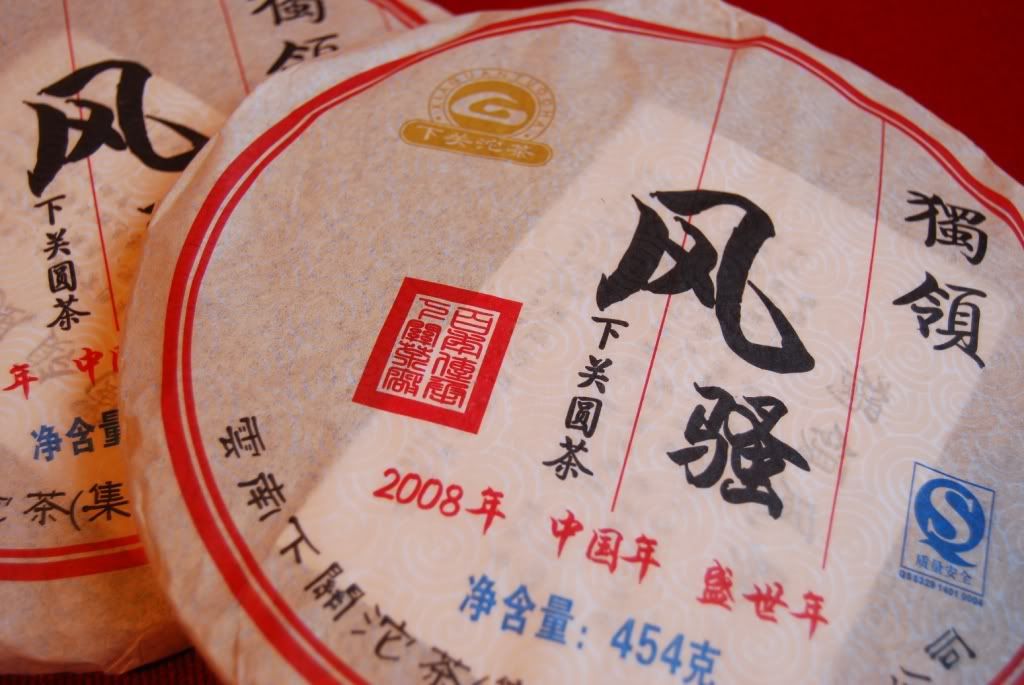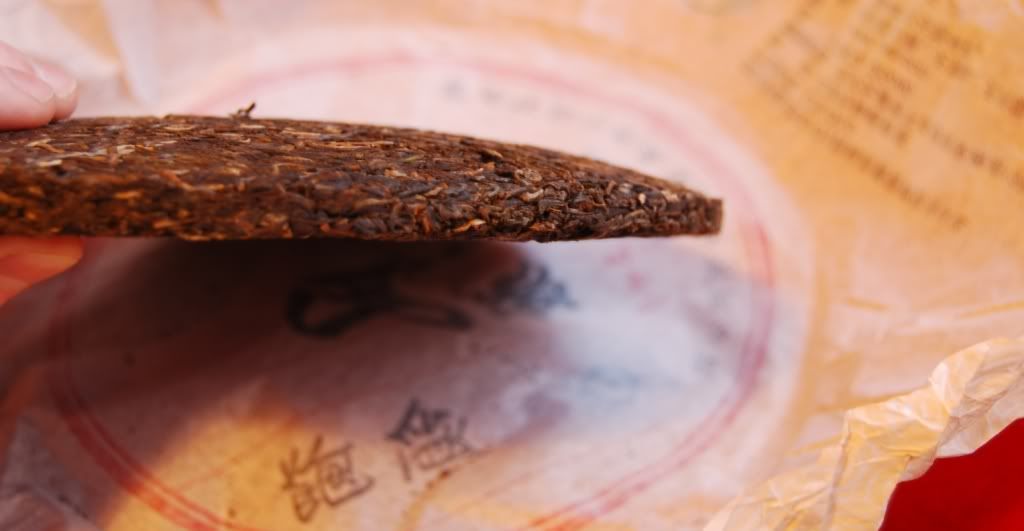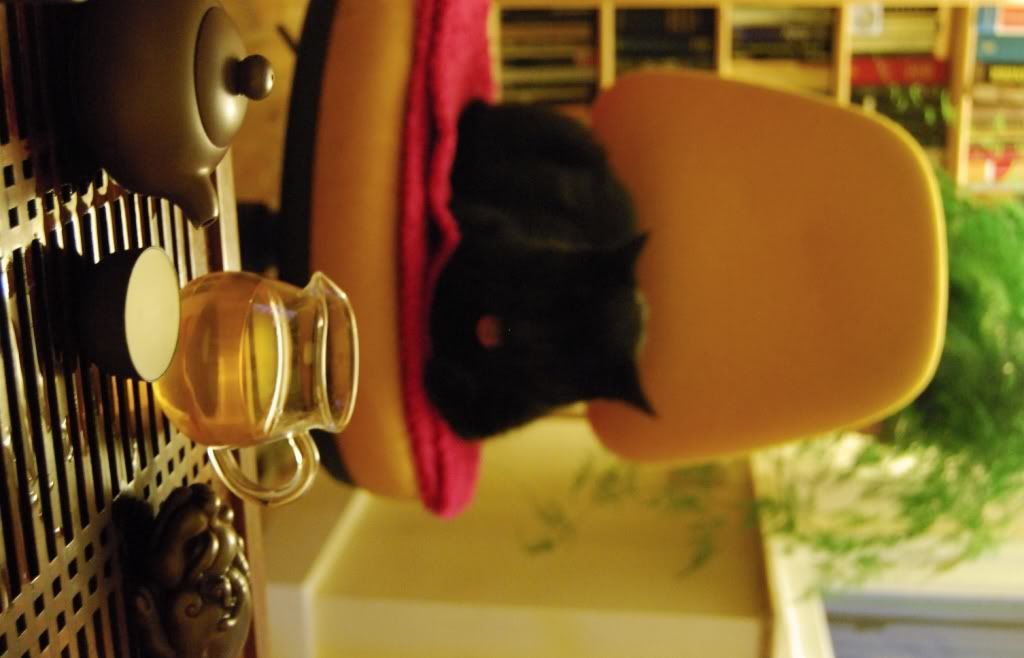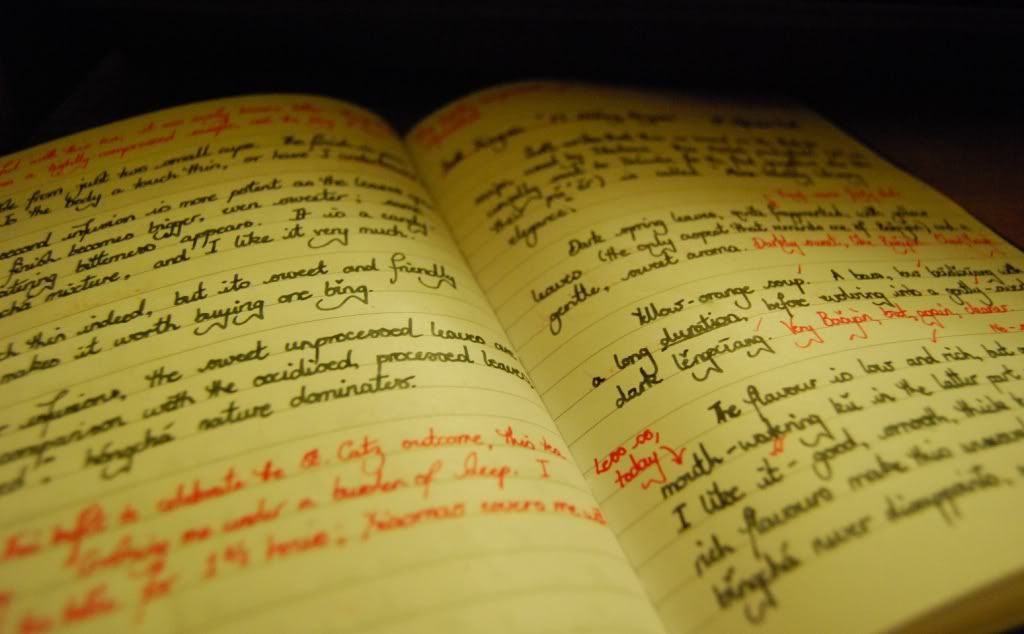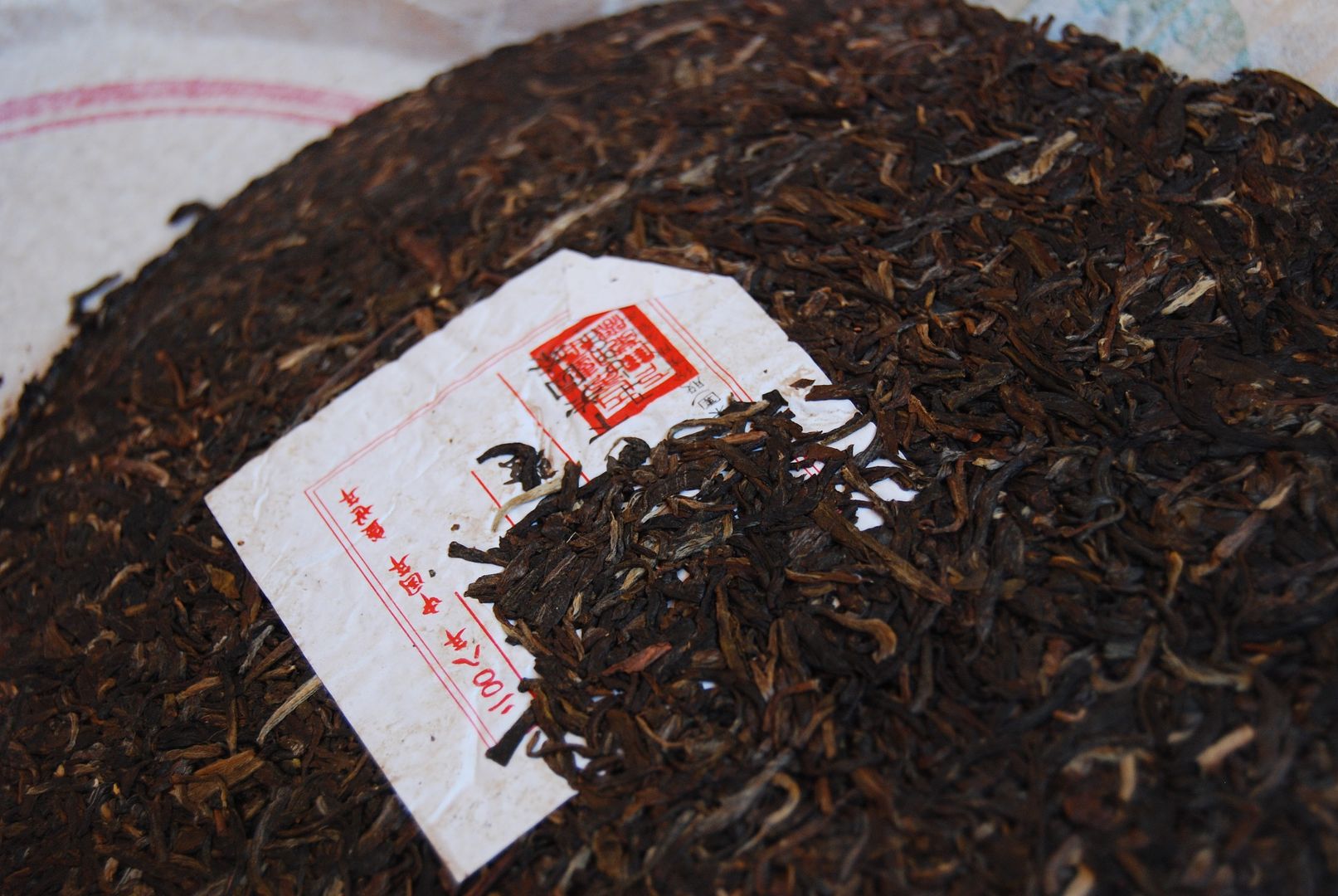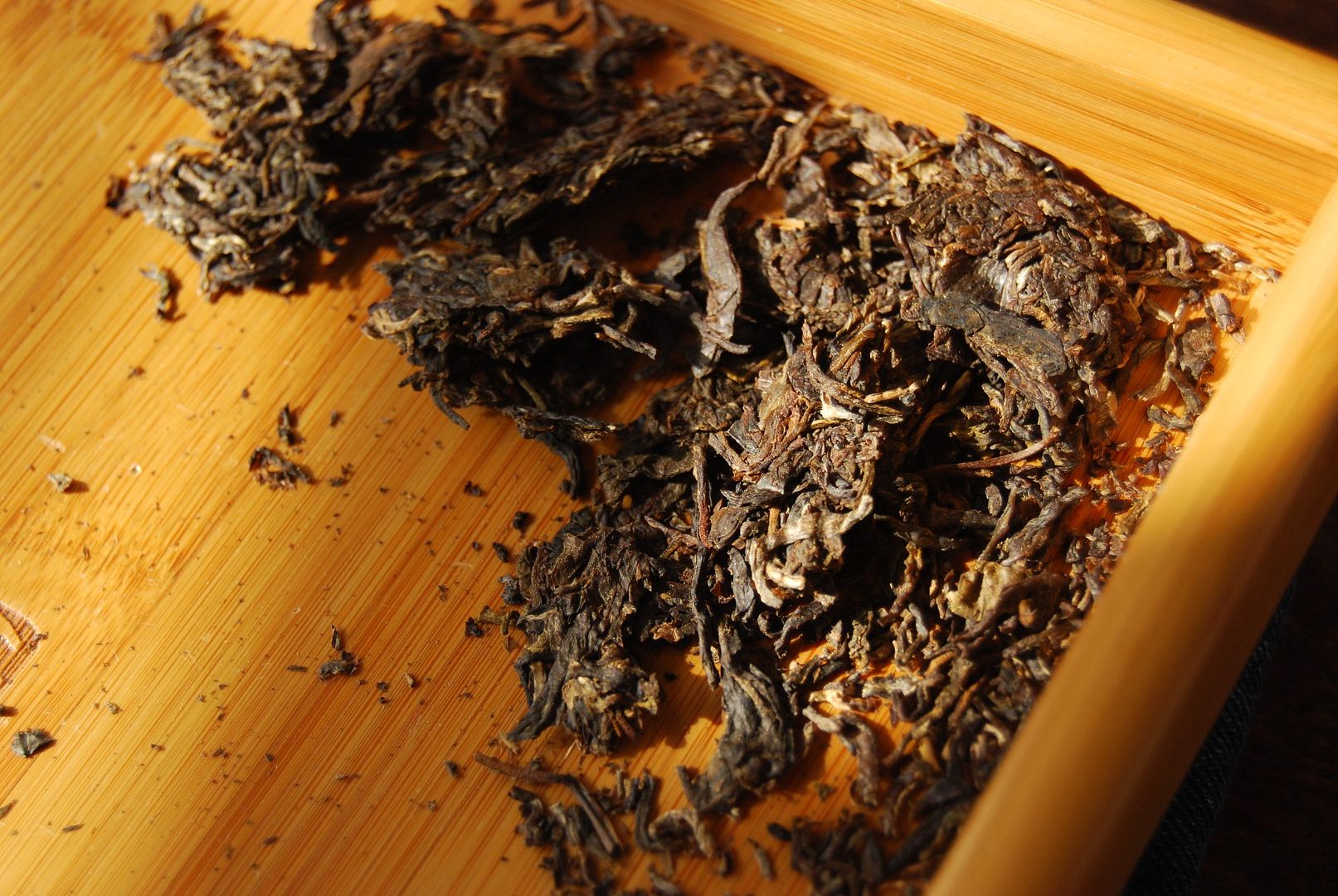While investigating the garden of our new place (something I've not had much opportunity to do), I found the following, growing up against a greenhouse:
It's a little baby fig tree, trying to grow through the brutality of a cold winter. What a sweet little thing it is, and presumably doomed to failure until the warmer months.
Another of my fond discoveries is the Lincang Gucha [ancient tea] company - you may remember the 2005 "Gushu Zhenpin" [ancient-tea treasured-product] that I so enjoyed before (pictured below, with its sister).
Technically, I suppose that this is Nada's discovery (thanks again!), but who's counting...
(It's nice to see, below, that I'm not the only person who has problems with pinyin: "Lin Chang".)
Another of my fond discoveries is the Lincang Gucha [ancient tea] company - you may remember the 2005 "Gushu Zhenpin" [ancient-tea treasured-product] that I so enjoyed before (pictured below, with its sister).
Technically, I suppose that this is Nada's discovery (thanks again!), but who's counting...
(It's nice to see, below, that I'm not the only person who has problems with pinyin: "Lin Chang".)
The leaves for this cake come from the rather amusingly-entitled "Bangdong Village" - amusing, that is, if your sense of humour hasn't changed much since primary school (of which I am wholeheartedly guilty). This cake came from Yunnan Sourcing, where the price is independently reporteded as being very close to the actual Kunming price - perhaps achieved by buying in bulk. Either way, that's fine by me...
Shown below, the big and dark leaves, which are somewhat fragmented, but which carry a high and quite sharp aroma - there's something of sweet leather about it. Some of the leaves have a vague red tinge which raises eyebrows.
Garden-like candy in the wenxiangbei [aroma cup] makes me immediately pleased with this spritely offering, which has good endurance. The soup is shaded towards orange (pictured below), which I suspect is not entirely due to its three years of aging.
The flavour has the predicted tinge of hongcha maltiness to it, but it has plenty of sweetness atop, and plenty of tobacco below, and it all works rather well together.
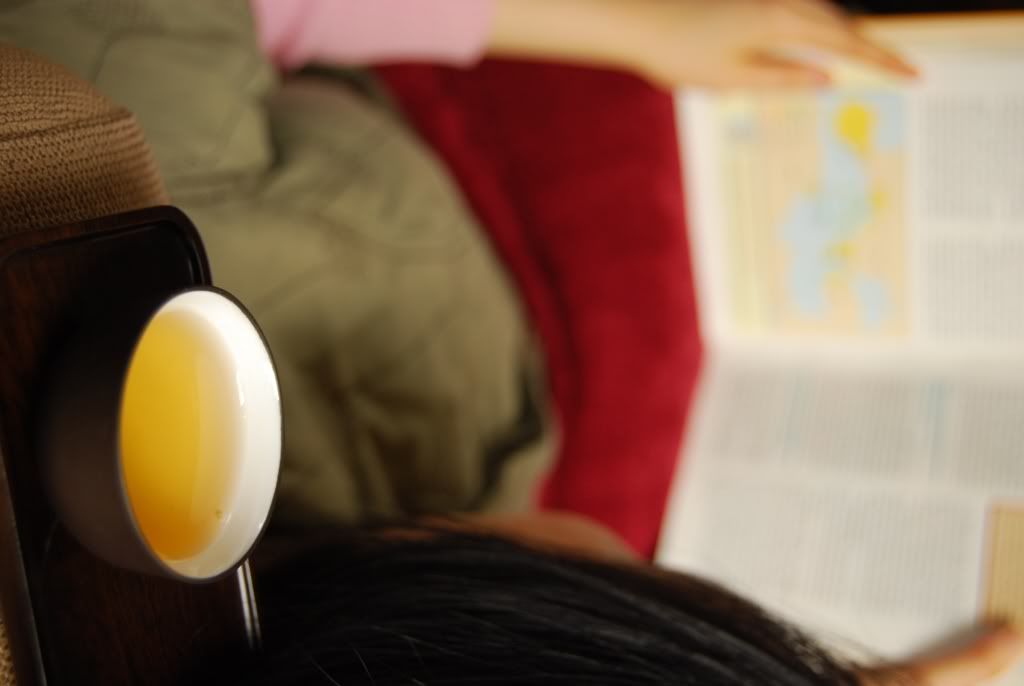
What a vigourous little number this is, with plentiful chaqi and cooling sensations to be had.
To sum up this energetic cake, I would classify it as "candy and hongcha", which is a unexpectedly appealing combination.
In later infusions, the sweetness of the unprocessed leaves dims in comparison to the oxidised, processed leaves, and the "red" hongcha nature takes more of a role near the end. All in all, a good tea - if you're ready to tackle the processing.
And with that, a toast to 2008 - and many good teas in 2009! See you there.
To sum up this energetic cake, I would classify it as "candy and hongcha", which is a unexpectedly appealing combination.
In later infusions, the sweetness of the unprocessed leaves dims in comparison to the oxidised, processed leaves, and the "red" hongcha nature takes more of a role near the end. All in all, a good tea - if you're ready to tackle the processing.
And with that, a toast to 2008 - and many good teas in 2009! See you there.

